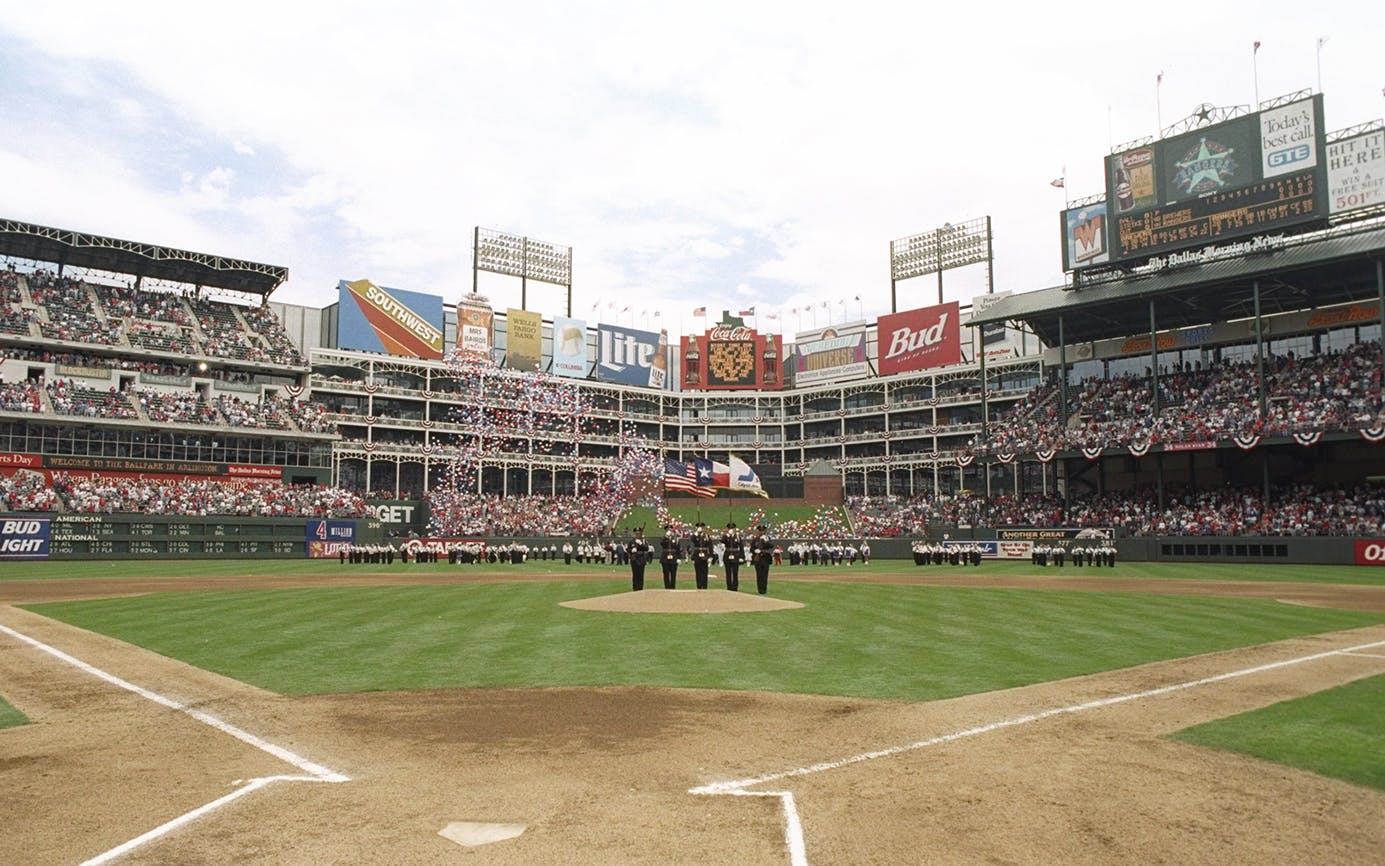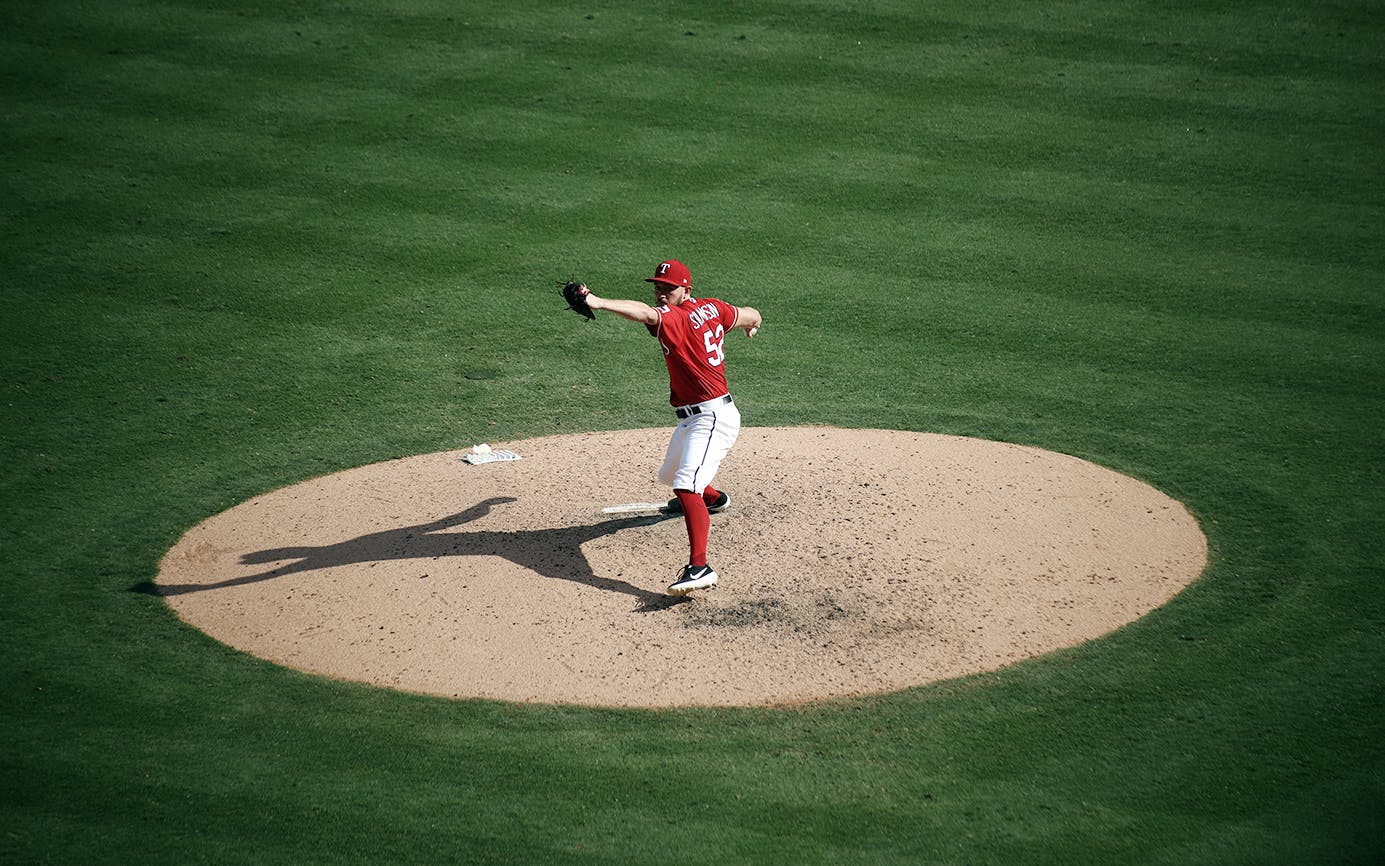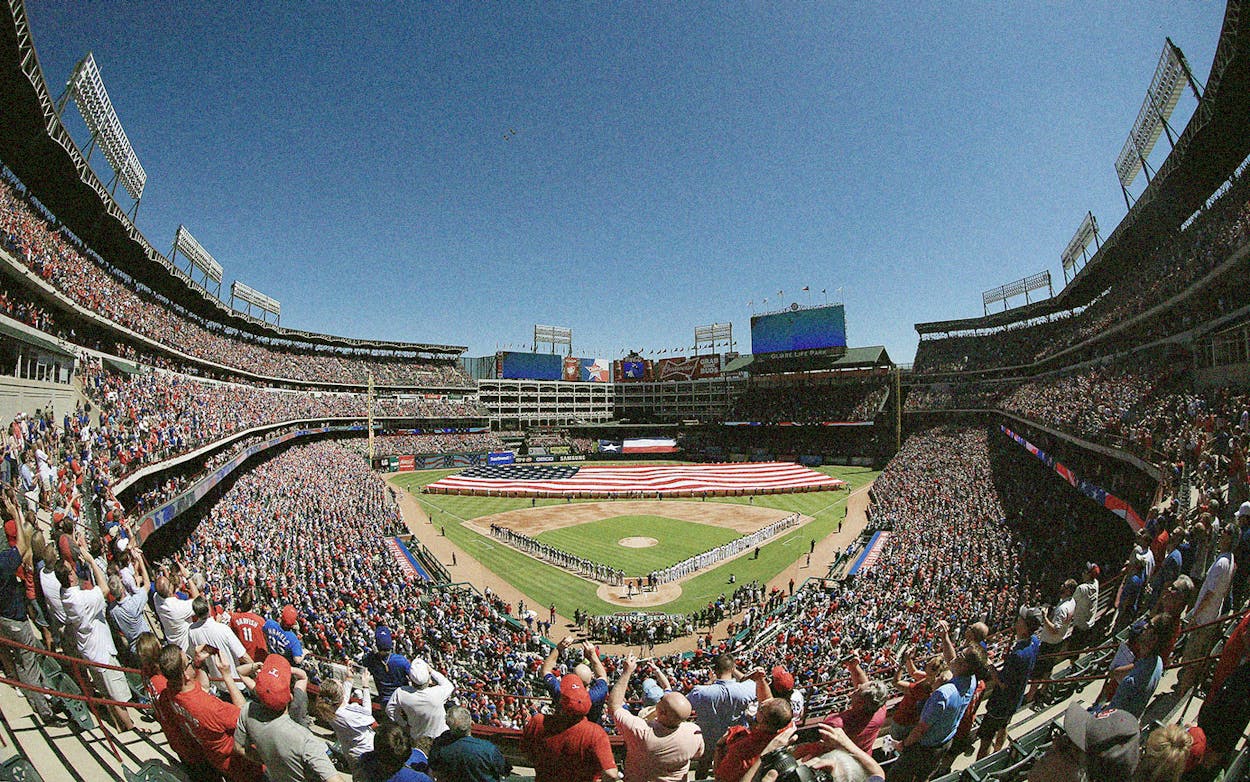I was there the night the Texas Rangers exorcised the ghost of Alex Rodriguez. It was the bottom of the ninth, two outs, and the Rangers were comfortably ahead of the New York Yankees by five runs in the sixth game of the American League Championship Series on October 22, 2010. Just one batter stood between the team and its first trip to the World Series.
Having this long-awaited moment play out against the franchise that had dispatched the Rangers the three (and only) other times they’d made the playoffs already felt like sweet revenge. Then came a bit of cosmic perfection. The last Yankee standing turned out to be Rodriguez—the star who, seven years earlier, had pressured Texas to trade him away after they gave him the then heftiest contract in sports history, a guaranteed $252 million.
I remember looking down to the field from my upper-deck perch that night in Arlington—standing among more than 50,000 fans already raucously celebrating—and laughing at the thought of A-Rod finally fulfilling his promise to take Texas to the Series. This time, he didn’t let the Rangers down. He struck out looking.
That will forever remain the greatest moment I ever witnessed at the house that George W. Bush built. (He was the front man for Rangers ownership when the team persuaded Arlington voters to pony up $135 million for its construction.) At the end of the month, the Rangers will abandon the place after just 26 seasons, moving their home games to a billion-dollar park right next door (with taxpayers kicking in $500 million this time). Before they close out the place, they’ll play one last six-game home stand against the Boston Red Sox and the Yankees this week.
I’ve lost track of how many games I’ve seen at Globe Life Park, previously known as Rangers Ballpark, Ameriquest Field, and the Ballpark in Arlington. I attended every home game of the Rangers’ 2010 playoff run, including watching the San Francisco Giants celebrate a World Series win. I was back at Game 6 of the ALCS in 2011, when the Rangers thumped the Detroit Tigers, 15-5, to secure a second straight trip to the Fall Classic. The next week I saw pitcher Derek Holland shut out the St. Louis Cardinals in Game 4 of what proved a heartbreaker of a Series for Texas.
Plenty of regular-season memories jump to mind as well—Texas scoring three runs in the ninth for a walk-off win after Arizona starter Randy Johnson held them scoreless for eight innings (on my birthday, no less); center fielder Gary Matthews Jr. defying gravity to rob the Astros of a home run with an astonishing catch that often shows up on the team’s all-time highlight reels; and slugger Sammy Sosa hitting his 600th career home run during his only season with the Rangers. I could go on.

It’s not any of these moments that constitute my most enduring memory of the ballpark, though. What sticks in my mind (as it stuck to my T-shirts so many times) is the sweat.
Taking in a ballgame on a 100-degree summer afternoon has meant roasting for a few hours in the open sun, my clothes soaked clear through by perspiration. If left unoccupied for a few minutes, the molded hard plastic of my seat threatened to singe any unprotected bit of skin that made contact with it. As uncomfortable as they are, these visceral, physical manifestations of a Texas summer left no doubt that we were present. In our own small way, we took part in what the players flecked across the diamond-shaped field must endure throughout nine innings of battle.
True baseball fandom is an affliction I have suffered all my life, and it requires commitment. Following the ups and downs of a team through the marathon of the 162-game season for six months demands a lot of fans, and includes—whenever you’re fortunate enough to spend a day or an evening at the ballpark—cheering along through uncomfortable weather. Baseball is an outdoor sport by design, and when it’s deprived of those unpredictable environmental influences, it’s made something a bit less than itself.
The former Rangers owners felt that back when the stadium opened in 1994. Globe Life Field (the Rangers’ new ballpark, set to open in March 2020) will feature a retractable roof for whenever it rains, or when the weather is deemed too hot to sit through comfortably. The team also touts the new roof as giving them a better shot at attracting free agents who might have balked at playing home games on a field that former Rangers pitcher Brandon McCarthy once described as “the surface of the sun.”
If you’ve been to the Houston Astros’ home, Minute Maid Park, you have a pretty good idea of what seeing a game at Globe Life Field will be like. When Minute Maid’s retractable roof is closed, it’s a chilling experience. My legs have been left covered in goose bumps there, due to the overly aggressive air-conditioning meant to protect spectators from the swampy Houston heat.
The Rangers will probably be overly enthusiastic about keeping their retractable roof closed, as the Astros have been (only seven games this season in Houston have happened outdoors). The team hasn’t yet decided its guidelines for when baseball will be played alfresco—a Rangers spokesman told me factors like wind conditions will play a role, and that they’ll likely settle on a maximum high temperature, 85 degrees or so. If that’s the limit, you can expect only some games in April, maybe early May, and late September with the open roof. What a shame.
I distinctly remember arriving at Minute Maid Park once and being disappointed to find that the team had opted to close fans off from a pleasant September evening. Still, many players, especially pitchers, like the predictability that climate controlled environments bring.
Does air-conditioning make watching a game a more pleasant experience? Most definitely. Yet it also feels so much less real, and the artificial comforts place us at a remove from the action. It’s more like seeing it on television.
It was 97 degrees at first pitch on a sunny mid-August afternoon. For my final pilgrimage to Globe Life Park, I decided to attend both ends of the last doubleheader in its history (barring a rainout and makeup game during the final home stand).
While I believe in the sanctity of outdoor baseball, I’m no masochist. I’ve attended enough Rangers games to know where to find the shadiest possible spots. My sister, her boyfriend, and I sat near the back of the field level, out of the sun entirely thanks to the mezzanine overhang above us. The announced attendance was 17,429, and it looked even smaller than that. Whole sections appeared empty on all three levels as many fans abandoned their ticketed seats in favor of crowding into the limited shade. Vendors hawking cold beer, soft drinks, and ice cream did brisk business. Two women in the row behind us each wore small motorized fans on bands around their necks.

The Los Angeles Angels jumped out to an early lead as their first six batters successfully reached base, including the best player in baseball, Mike Trout. When Rangers starting pitcher Joe Palumbo finally recorded an out, people applauded sarcastically. A few hours later, the final score was a Rangers 5-1 loss, and the temperature was 100 degrees. I sat in the shade for the entire game, but the back of my T-shirt was still wet.
With a few hours between games, I walked over to Texas Live!, the bar and restaurant complex the Rangers opened last year across the street from the ballpark, right beside the new stadium under construction. I overheard a man on the phone as he too headed that way. “I’m walking between the old one and the new one, walking across the street to get something to eat in the air-conditioning between games,” he says. “The new one will have air-conditioning, and I’ll be done with this shit.” The music inside Texas Live! was obnoxiously loud, but the A/C was a welcome break, at first. After a while, it just got too cold—an omen of what’s to come next year at Globe Life Field?—and I ended up heading back outside to the building’s beer garden to thaw out.
It was still 98 degrees when the second game began just after 7 p.m. My best friend from high school and college, whom I now only see about once a year, joined me. (It dawned on me later that he was also with me during my first visit ever to the ballpark, back in 1994.) My friend isn’t really a baseball fan, yet he’s enthusiastic about the ballpark experience—drinking beer, eating nachos, having some entertainment play out before him that doesn’t demand constant attention. We talked about old times, swapped book, TV, and music recommendations, and mostly caught up on each other’s lives. These lazy, carefree Texas summer evenings just aren’t the same without the renewing pleasures of an occasional breeze and the open sky above.
The small crowd—just 15,638 people, the lowest attendance at a Rangers home game since 2010—got to see a good one this time, as the temperature slowly descended. By the time Texas claimed an eleventh-inning walk-off win, hours after the sun went down, it was a relatively mild 89 degrees. I only hope that the team hosts at least one throwback game a year at Globe Life field, roof open in the blazing heat of an August afternoon, for those of us who perversely miss chances like this to perspire along with the action.








